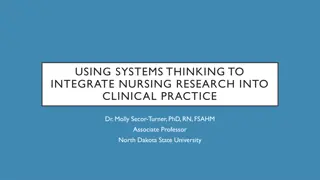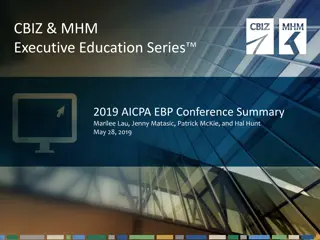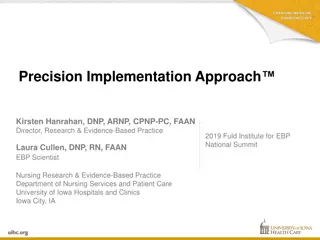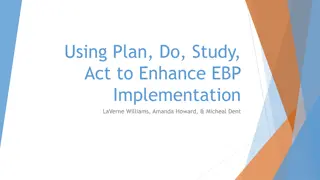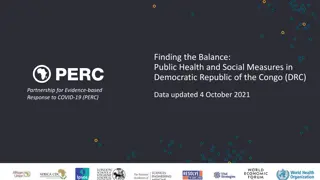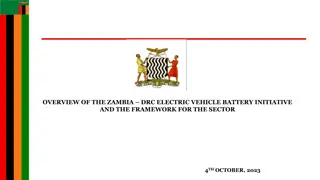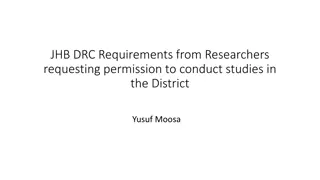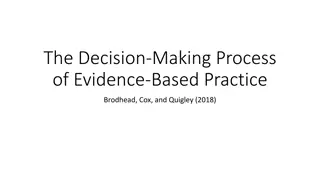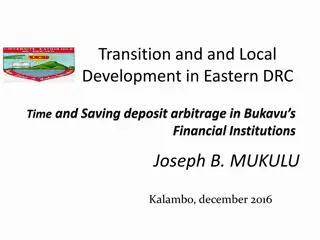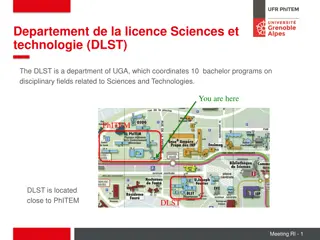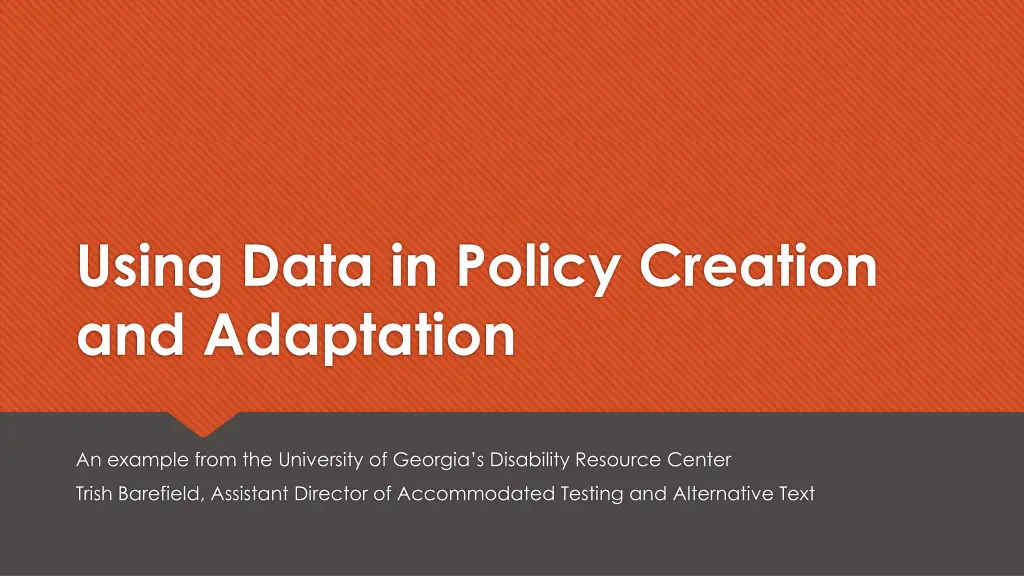
Using Data for Policy Adaptation: A Case Study from University of Georgia's Disability Resource Center
Explore how the University of Georgia's Disability Resource Center leveraged data to inform policy changes. Discover how the new system, Accessible Information Management (AIM), facilitated improvements in accommodating late exam requests and enhanced student interactions. Learn about the successful results achieved through strategic planning and data-driven decision-making.
Download Presentation

Please find below an Image/Link to download the presentation.
The content on the website is provided AS IS for your information and personal use only. It may not be sold, licensed, or shared on other websites without obtaining consent from the author. If you encounter any issues during the download, it is possible that the publisher has removed the file from their server.
You are allowed to download the files provided on this website for personal or commercial use, subject to the condition that they are used lawfully. All files are the property of their respective owners.
The content on the website is provided AS IS for your information and personal use only. It may not be sold, licensed, or shared on other websites without obtaining consent from the author.
E N D
Presentation Transcript
Using Data in Policy Creation and Adaptation An example from the University of Georgia s Disability Resource Center Trish Barefield, Assistant Director of Accommodated Testing and Alternative Text
Campus Context Public land-grant with an enrollment of 37,000+ 2,000+ students (5.4% of total pop.) registered with the Disability Resource Center (DRC) DRC switched data management systems in summer 2016 The new system, Accessible Information Management (AIM), tracks data that has been used to make informed decisions The DRC s Testing Accommodation Office (TAO) has utilized AIM data to update procedures around late exam requests
The Problem In the 2017-2018 academic year: The TAO proctored over 14,000 exams 1,000 unique students used our testing center Instructors for 4,500 classes received 9,200 Notifications of Accommodation Over 1 million minutes of proctoring completed (yes, AIM tracks that!) 18.7% of exams were scheduled with less than 3 business days notice Late exams are a major stressor for staff, students, and faculty Students had fewer face-to-face contacts with coordinators after procedures moved online To address these issues, created a campaign to educate current students and promote positive habits with new students
The Plan Switched late requests from 3 business days to 7 days Only added 1 business day Standardized intake procedures to a two-meeting format First to determine accommodations and second to delve into procedures Changed how last-minute requests are handled internally If a student tries to schedule less than one day before an exam, they are directed to their coordinator Coordinator follows new flow chart to determine if they should advocate that the student take the test in the TAO or contact the instructor to discuss accommodations near the class or postponing the test Connecting the student with their coordinator creates an opportunity for the coordinator to set up an appointment and assist with scheduling all tests for the semester
The Results Compared to the previous fall: The percentage of late requests went down by 1.4%, from 18.7% to 17.3% A decrease was observed even though we moved the deadline from 3 business days to 7 days The number of student/ coordinator meetings increased by 185, excluding initial interviews The 66% increase is correlated with coordinators meeting with students to schedule exams Yet untested hypotheses: students are more comfortable with utilizing the online scheduling system and are more likely to contact their coordinator for assistance
Next Steps Short-term Analyzing additional data once the spring semester is complete Reassessing policies to see if further changes are needed Long-term With this project, we did not do a pre-assessment of student perceptions In the future, we will create a pre-/post- assessment for additional data on policy impact Continue to locate areas where data from AIM can spark change and improve procedures



